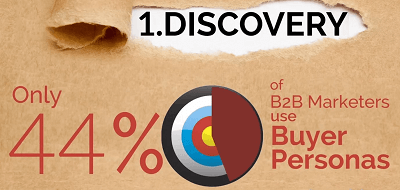More than just the place customers go to get information on your products and services, your website is the central hub of your business's digital presence. In today's highly competitive market, you can't afford to let your website become stagnant - it needs to be a living, breathing, and constantly evolving component of your brand.
Think of your website as the heart of your business: the beat of your digital marketing campaigns is what pumps visitors, leads, and ultimately, money, to all other areas of your company. Much like the human body, your business cannot survive without its heart and the lifeblood it provides.
We've got the huge importance of websites on the brain this month, so we focused our digital marketing video entry on unpacking all the ways to build and maintain a top-notch website. Here are the 7 Steps to Website Success:
1. Discovery - Understand What You Need
Remember this: your website isn't for you, it's for your customers. Yes, your site represents you, and you can certainly design and accent it to mesh with the spirit of your brand, but it's intended to be used by your customers, so they should remain at the forefront of its purpose.
Before you can build a website for your customers, you first need to understand them and flesh out the reasons why they want to use your products or services. Creating customers personas that define the groups of your customer base - down to every last detail - will go a long way toward making your website the healthy and strong heart it needs.
2. Budget – Think Investment, Not Cost
The question of budget is always a problem. One side wants to pay as little as possible and the other wants to charge as much as they can get, so needless to say, things don't always match up. At the end of the day, however, paying as little as possible for your website isn't the route you want to take. This doesn't mean you have to go out and pay for the most expensive website either, just keep in mind how important the thing you are purchasing is - that should land you in the correct range. Don't think about the cost now, but rather the long-term investment you're making.
3. Planning – Crucial to Your Success
We've probably said this before, but just because you build a website, doesn't mean visitors will come. Let's get philosophical: if you build a website but nobody other than you and your employees sees it, did you really build a website? We won't debate the answer, but you get the point: while you're building your website, you also need to devise a plan for how you're going to use your website, meaning which kinds of digital campaigns will be flowing through it. Will you be attempting to generate all organic traffic with SEO and content, or will you be focusing on paid advertising? If you know in advance what you'll be doing, you'll be able to build a more optimized website.
4. Design and Build
After you've completed the first three steps, you should have a plan and a design that's close to being ready to build. You'll have to get some creative input from people who know how to make things look pretty, but the process up to this point will have been your outline clear. If it seems like you don't have much to go on as far as a plan, then you need to repeat steps 1-3 with a little more gusto!
5. Test and Debug
When it comes to the launch of a website, quality assurance testing often falls by the wayside (usually because the project is behind schedule). But if you can spare the extra day, make sure to do some basic testing on your site. Among the most important aspects of testing and debugging your website are ensuring the quality and functionality of responsive design, spelling, and grammar of static content, checking hyperlinks, and overall, using the website to be absolutely positive you're delivering a great experience to visitors.
6. Pre and Post Launch Activities
Instead of launching your website and waiting to see what happens before deciding what to do next, how about coming prepared? The moment you put your site out there for people to use, it should be fully optimized for SEO and social media, as well as equipped to capture information and correctly funnel leads along the path to conversion.
7. Analyze and Improve
Your website is not something you can set and forget. Once your site is live, it generates a whole ocean of easily accessible data. It doesn't need to be a daily task, but every month, you should be looking at your website's data to see if there are areas of obvious drag on its performance. For example, if there's a page you intend visitors to read that has an extremely low time-on-page number, then you know something is wrong. You should tweak the page until you see the numbers improve, or get rid of it entirely if they don't. Sometimes, you can add by subtraction, or by making a small change for the better. When in doubt, remember that constant iteration is always the path forward.
If you would like more information on having your website built or audited by a professional, get in touch with your local WSI Digital Marketing Consultant today.






